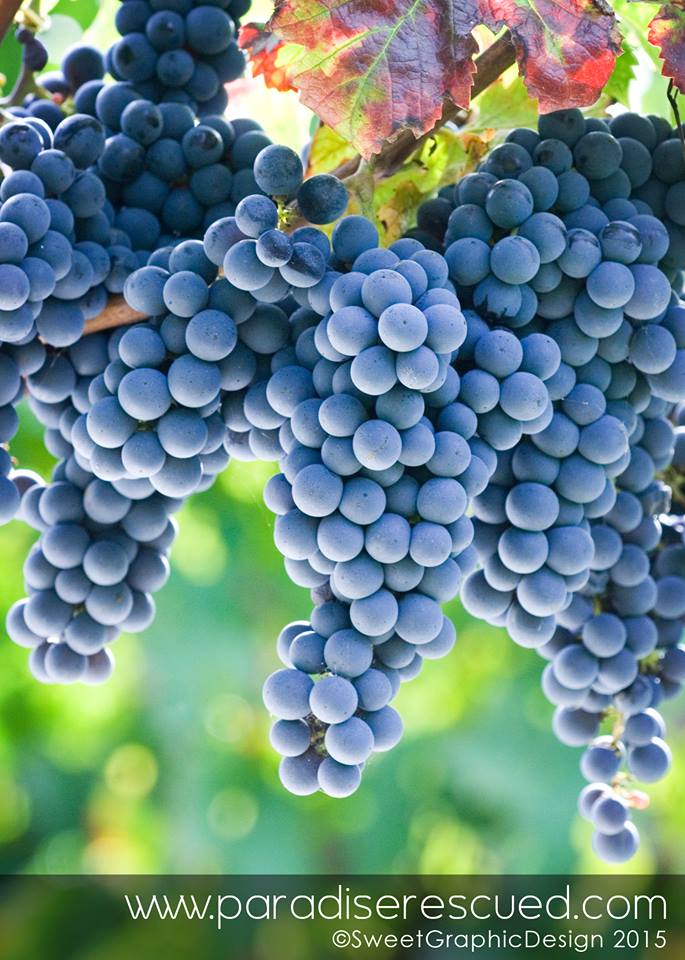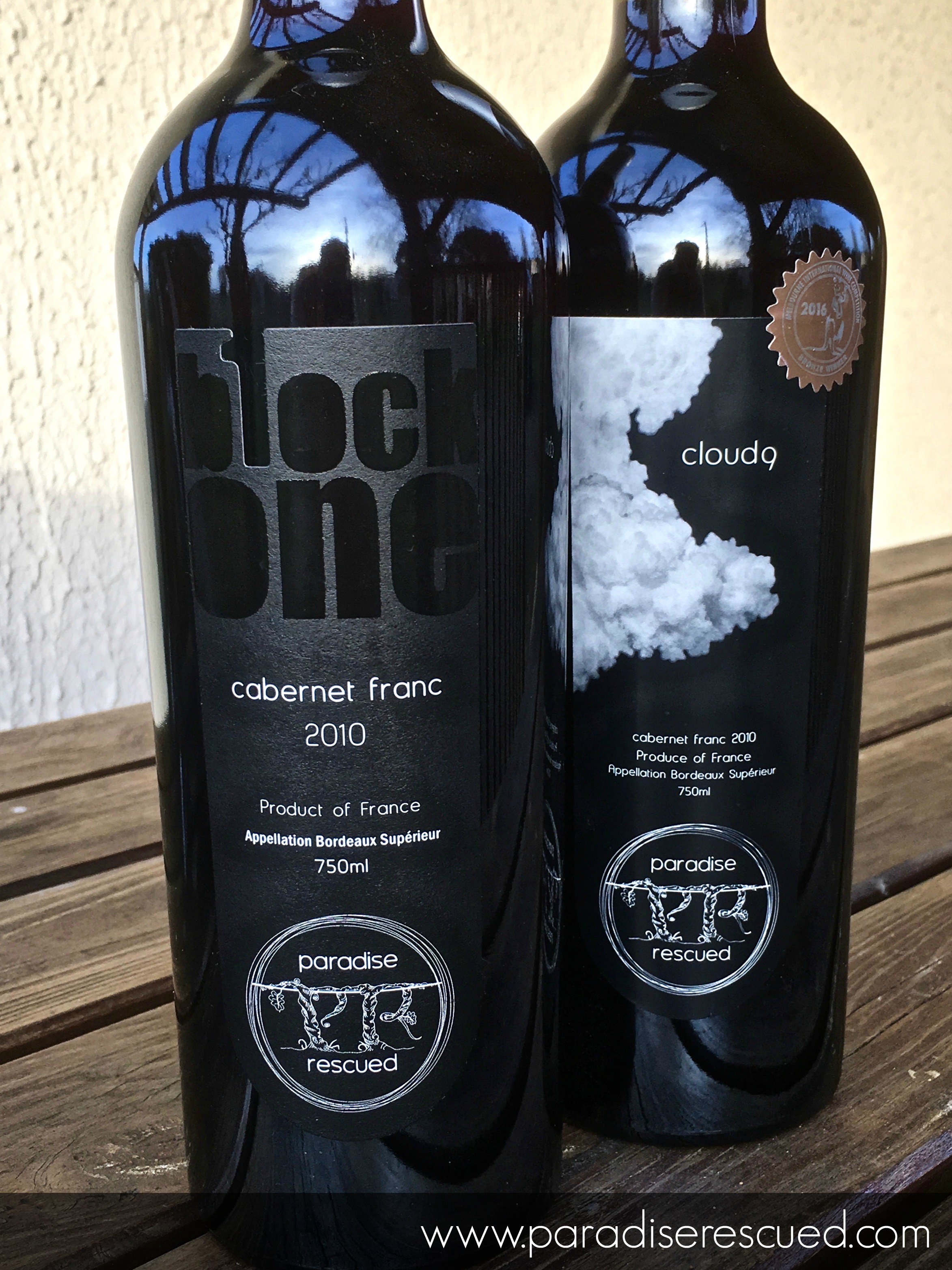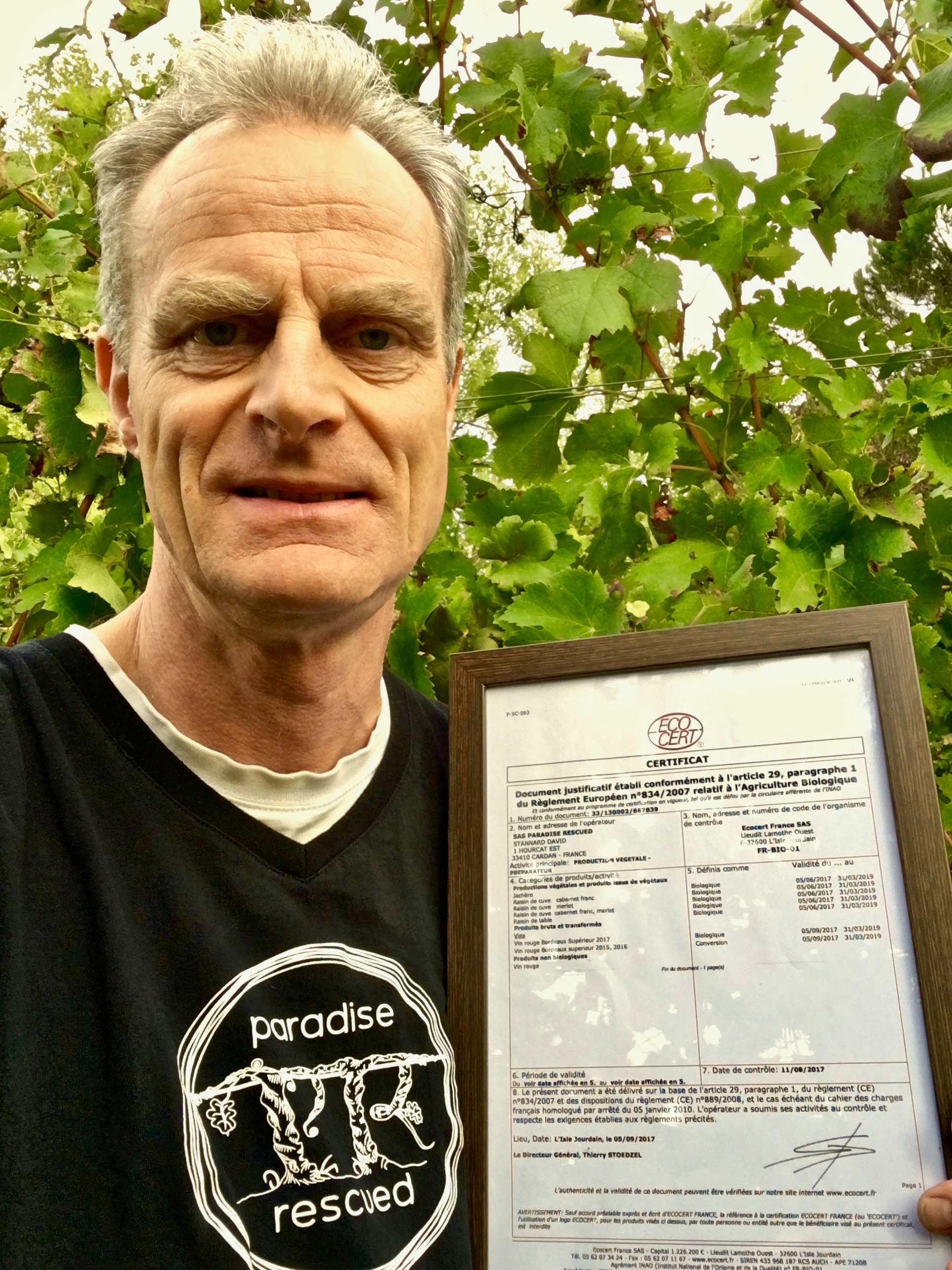There is a lot to clear up in this little blog post! What is Cabernet Franc? Of course, it’s a wine type or grape varietal. But what are its’ characteristics? Where are its’ origins? What does it taste like? Where is it grown? What’s its’ popularity.

Cabernet Franc fruit ripening in the Bordeaux vineyards
Maybe it is better to start by clearing up what Cabernet Franc is not rather than what it is! Cabernet Franc (CabFranc) is not the same as Cabernet Sauvignon. They are both part of the same family of wine grapes with Cabernet Franc (in partnership with Sauvignon Blanc) being the parent of Cabernet Sauvignon (CabSav). CabFranc is not only a parent to Cabernet Sauvignon but also Merlot and Carmenère.
I hear a lot of people who generally refer to all CabSav as Cabernet or Cab. As the senior partner in the relationship, CabFranc is offended!
This “mislabelling” occurs quite simply because in the new wine world (North and South America, Australia, South Africa, etc) Cabernet Sauvignon has taken off as one of the major red wine varietals. In overall global vineyard plantings, Cabernet Sauvignon is the number 1 global grape. Cabernet Franc is in the top twenty but has lass than one fifth of the planting acreage compared to CabSav. And more than 80% of the CabFranc vines are found in two European countries – France and Italy. But you wouldn’t think so since traditionally old wine world countries rarely disclose the grape varieties on their labels. And although Cabernet Franc is growing in popularity in the new wine world, that rate of growth is small compared to Cabernet Sauvignon!
The origins of Cabernet Franc are not completely clear although there is now some good evidence to suggest that it came from the lower Basque region in northern Spain before relocating to the Bordeaux region of France. In the mid 17th century, Cardinal Richelieu transported cuttings from Bordeaux to the Loire Valley. And those two wine regions are today the largest global vineyard regions for Cabernet Franc.
I will let legendary wine writer, historian and critic Jancis Robinson open the tasting notes when she writes “Cabernet Franc might be described as the feminine side of Cabernet Sauvignon. It is subtly fragrant and gently flirtatious rather than massively muscular and tough in youth.” Cabernet Franc is memorable for its fragrance, softness of taste and how it lingers in your mouth after drinking. It can be drunk young or allowed to mature to achieve sheer finesse and elegance. With a slightly higher level of acidity that most red wines, CabFranc is perfect for pairing with foods, such as roast meats, stronger red fish, hard cheeses or even serving as an aperitif drink.

Full varietal Bordeaux Cabernet Franc by Paradise Rescued
For a world Top 20 wine, Cabernet Franc – in line with its non-affronting taste – can be a little hard to find. The largest producing country is France, where traditionally wine makers do not list the grape varietals on their bottle labels but rely on consumers to know their brands and wine regions well. Although this trend is slowly changing as domestic French wine consumption falls and wineries have to export to find their customers, it is still often very hard to know if Cabernet Franc is in a particular French wine bottle unless you know something about the producer.
Bordeaux is a classic example as the world’s most concentrated CabFranc producing region. Because the qualities of Cabernet Franc so beautifully balance with its more heavy, rugged and tannic CabSav and Merlot, its presence in a particular Château blend bottle goes unnoticed from the outside. In that region comprising 8,500 producers, less than ten market a full varietal Cabernet Franc. The leader of which is Paradise Rescued full varietal B1ockOne or Cloud9 wines.
One of the most famous Bordeaux brands is Château Cheval Blanc, which because it comes from the Merlot dominated region of St. Emilion, is similarly assumed to be a predominately Merlot based wine. Typically, every year 50% or more is Cabernet Franc.
The future is very positive for Cabernet Franc. In the last 20 plus years, global CabFranc vineyard coverage has increased by up to 35%. This is a wine varietal on the grow. It now has its own annual wine day – #CabFrancDay. The growing trend of lower alcohol, fruit forward and lighter wines – as seen by the surge in Pinot Noir – will rapidly drive its increasing popularity upwards. Look out for Cabernet Franc.

David Stannard is the founder director of Bordeaux niche wine producer and micro winery brand Paradise Rescued, which is a community sustainability business founded around a single block of Cabernet Franc vines, now producing high quality certified organic wines. David’s story can be read in his first book “From Cabbage Patch to Cabernet Franc”. Paradise Rescued is the winner of two Silver Stevie International Business Awards in 2013 and 2016.